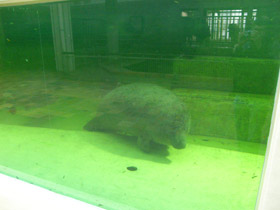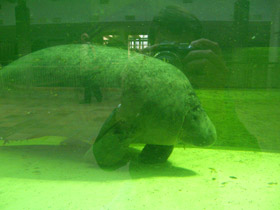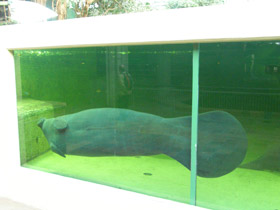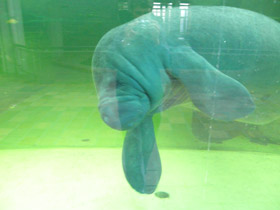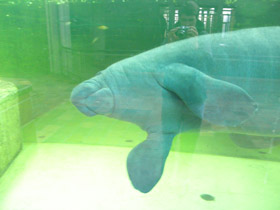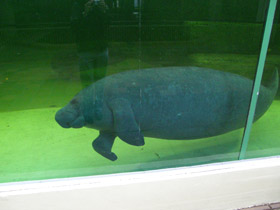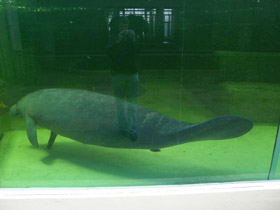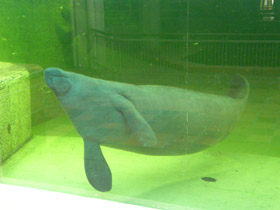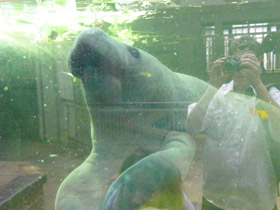The American, or West Indian manatee Trichechus manatus
The body length of the West Indian manatee does not exceed 5 meters (average body length is 3.5 m), and maximal weight is 400 kg. This rare animal is distributed in Atlantic region of the Americas, from Florida (300N) to Brazil (190S). The West Indian Manatee is currently divided into two subspecies, the Florida manatee (Trichechus manatus latirostris) found in shallow waters of Florida and in the Gulf of Mexico (around 1,000 individuals), and Antillean manatee (Trichechus manatus manatus) distributed along the shores of West India, Central America, Venezuela, Guiana, and Brazil to the Manzanares Laguna. The Antillean population numbers several thousand animals. Manatees are able to live in both freshwater and marine habitats. The West Indian manatee has a split, flexible, prehensile upper lip which it uses to gather food and put it into the mouth. Front flippers of the manatees have small toenail-like hooves.
Manatees living in littoral waters rich in vegetation are sedentary but they typically migrate from the areas where food is scarce (in Mexican aquatic region the animals migrate over the distances of up to 100 km). Manatees can be found in rivers, and estuaries and saltwater bays although Florida manatees stay in such habitats for quite short periods. Manatees are active in evening and early morning periods, resting submerged during daytime. Antillean manatees are more inclined to spend time in the rivers, especially in the South American full-flowing rivers. Manatees soundlessly breathe air through nostrils with the interval of 1 to 2.5 minutes. Their nostrils are covered by flaps that open only for two seconds, when the animals exhale. Manatees are able to vocalize with audible squeaks and whistles lasting for up to 0.5 sec.
Gestation period in manatee females is not fully studied but is thought to range from 6 to 12 months. Manatee female usually gives birth to a single calve which is born either head- or tail-first. The newborn manatees have body length of 1-1.2 m and weigh 16 to 32 kg. The calf is cared for by its mother and is weaned by 18 months. In captivity, young manatees reach the length of 112 to 132 cm by the end of their fist year of life and only by the fourth year does the length of their body become doubled comparing with that at birth. Manatees become sexually mature by the age of 3 to 4 year when their body length reaches 2.5 m. Natural predators of manatees include caimans in tropical rivers, and tiger sharks in the sea but manatees are so large that they are rarely predated. When threatened, these slow aquatic animals are able to defend themselves. Antillean manatees typically swim about 4 to 10 kilometres per hour. However, they have been known to swim up to 25 km per hour in short bursts.
In 1893 a state law was established in the USA to protect manatees. At the start of the twentieth century fines were established for the killing of a manatee. Manatees are now protected by the U.S. Marine Mammal Act (1972), the U.S. Endangered Species Act (1973), and the Florida Manatee Sanctuary Act (1978). West Indian manatees are used as a means of weed control in Florida, Surinam, and Guiana. Although hunting of manatees is prohibited, human-related factors, primarily water pollution and watercraft collisions, cause declines in population sizes.

















